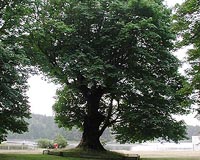 |
Richland WA (SPX) Sep 11, 2009 The Department of Energy's Pacific Northwest National Laboratory will receive more than $6.8 million over three years to advance the production of renewable power from the natural movement of oceans and rivers. The bulk of the funding - $3.45 million, or $1.15 million per year - allows PNNL to lead a project that will examine the environmental impacts of marine and hydrokinetic power. Marine power includes power harnessed from the flux of ocean tides and waves, while hydrokinetic refers to power generated from flowing freshwater without dams. The project will prioritize the risks that these kinds of power generation can have on the environment and wildlife; conduct laboratory and field experiments to further investigate certain risks; and predict the long-term impact of full-scale energy installations. "Understanding how harnessing marine and hydrokinetic energy can affect the environment is key," said Charlie Brandt, director of PNNL's Marine Sciences Laboratory in Sequim, Wash. "This work will help remove the roadblocks that currently prevent developers from putting tidal-, wave- and current-powered machines in the water." Some of the issues researchers will examine include how fish and marine mammals are directly affected by water power devices - including induced electromagnetic fields, noise and blade strike - and whether producing these kinds of power could create "dead zones" by interfering with the ocean's circulation and nutrient patterns. Staff from PNNL's offices in Seattle, Richland and Sequim, Wash., and Portland, Ore., will work together on the project. The study will also be done in collaboration with Oak Ridge National Laboratory, Sandia National Laboratories, the Northwest National Marine Renewable Energy Center (to which Oregon State University and the University of Washington belong), the University of Massachusetts-Dartmouth and Pacific Energy Ventures, an Oregon renewable energy consulting firm. DOE's Office of Energy Efficiency and Renewable Energy also announced that PNNL would support four other advanced water power technology projects being led by other national laboratories. For two of the projects, PNNL will partner with the National Renewable Energy Laboratory and Sandia National Laboratories to use computational fluid dynamic models to develop and evaluate marine and hydrokinetic power devices. PNNL will also work with Argonne National Laboratory on advanced water flow forecasting to optimize the efficiency and environmental performance of hydroelectric power plants. And, finally, PNNL will team with Oak Ridge National Laboratory to increase fish passage safety and power production at existing dams, study how fish and wildlife are affected by the variable stream flows from dams, and measure and predict greenhouse gas emissions from dam reservoirs. Share This Article With Planet Earth
Related Links Pacific Northwest National Laboratory Powering The World in the 21st Century at Energy-Daily.com
 Electrical Circuit Runs Entirely Off Power In Trees
Electrical Circuit Runs Entirely Off Power In TreesSeattle WA (SPX) Sep 11, 2009 You've heard about flower power. What about tree power? It turns out that it's there, in small but measurable quantities. There's enough power in trees for University of Washington researchers to run an electronic circuit, according to results to be published in an upcoming issue of the Institute of Electrical and Electronics Engineers' Transactions on Nanotechnology. "As far as we know th ... read more |
|
| The content herein, unless otherwise known to be public domain, are Copyright 1995-2009 - SpaceDaily. AFP and UPI Wire Stories are copyright Agence France-Presse and United Press International. ESA Portal Reports are copyright European Space Agency. All NASA sourced material is public domain. Additional copyrights may apply in whole or part to other bona fide parties. Advertising does not imply endorsement,agreement or approval of any opinions, statements or information provided by SpaceDaily on any Web page published or hosted by SpaceDaily. Privacy Statement |